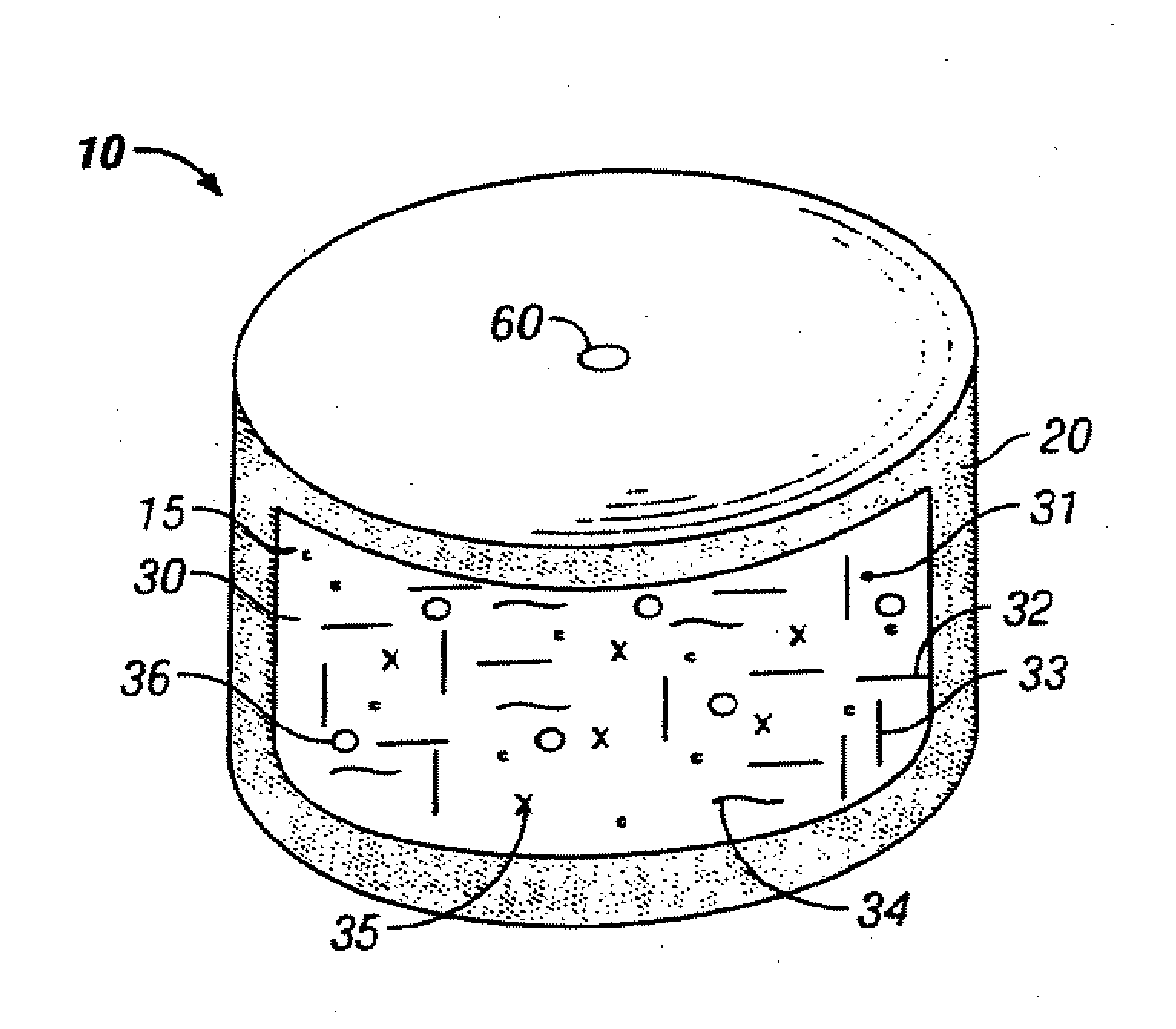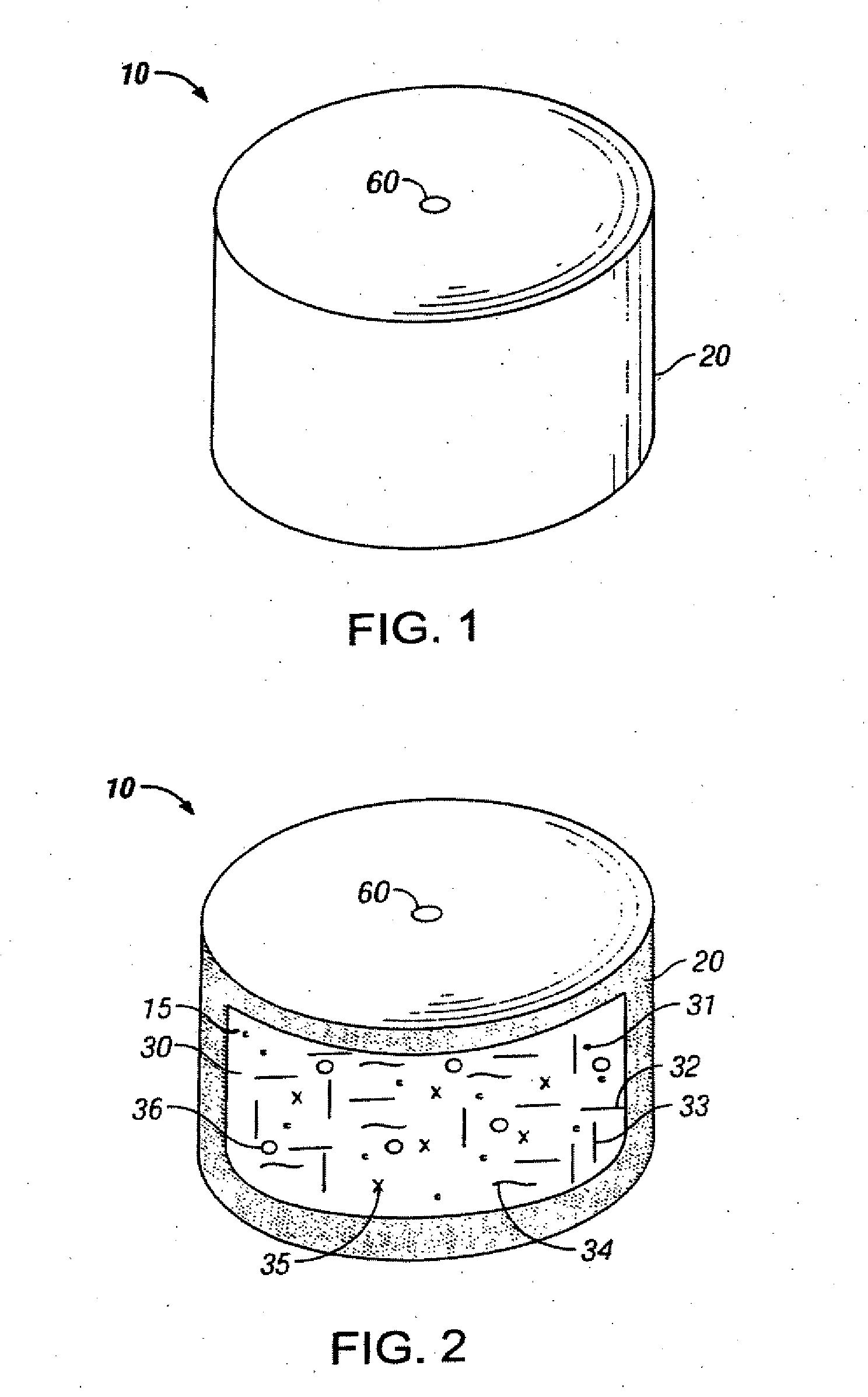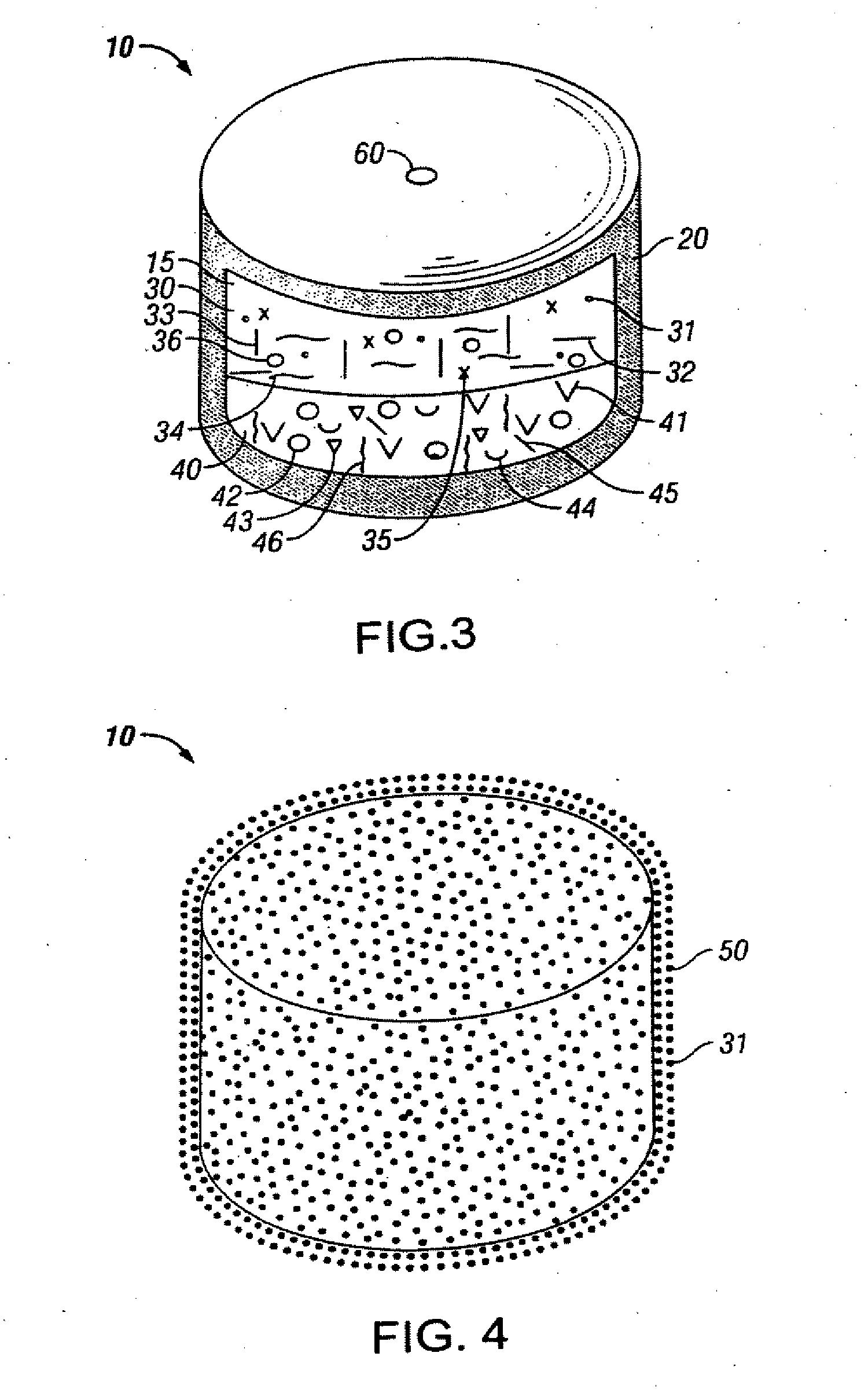Novel drug compositions and dosage forms of topiramate
a technology of topiramate and composition, which is applied in the direction of drug preparations, pill delivery, nervous disorders, etc., can solve the problems of patients not showing evidence of drug tolerance with prolonged treatment, capsules such large that patients are unwilling or unable to swallow, and achieve the effect of prolonging controlled delivery
- Summary
- Abstract
- Description
- Claims
- Application Information
AI Technical Summary
Benefits of technology
Problems solved by technology
Method used
Image
Examples
example 1
Bi-Layered Osmotic Dosage Form of Topiramate
[0383] A drug composition of the present invention was prepared as follows. Aqueous solutions of five surfactants were prepared. The selected surfactants were four grades of ethylene oxide / propylene oxide / ethylene oxide (LUTROL grades F127, F87, F108, and F68) and PEG-40 stearate (MYRJ 52). Solutions were made at concentrations of 1, 5, and 15 weight percent. The aqueous surfactant blends solutions were chilled as necessary to promote complete dissolution of the surfactant prior to drug solubility studies. Each surfactant had a different HLB value and spanned a range of 16.9 to 29 HLB units.
[0384] The aqueous surfactant solutions were equilibrated to constant temperature in a 37° C. water bath. Then, neat topiramate drug was added slowly with stirring in approximately 10 mg increments to the surfactant solutions until no more drug dissolved. A control sample of drug dissolved in de-ionized water without surfactant was included for compar...
example 2
Bi-Layered Topiramate Dosage Form
[0398] A drug composition of 9.0 grams of micronized LUTROL F127 was dry mixed with 16.5 grams of topiramate. The topiramate had a nominal particle size of 80 microns. Next, 3.45 grams POLYOX N80 and 0.9 grams of polyvinyl pyrrolidone were sieved through a minus 40 mesh and blended into the mixture. Then, 5 grams of anhydrous ethanol was added slowly with stirring to form a damp mass. The damp mass was passed through a #16 mesh sieve and air dried overnight at ambient temperature. The resulting dried noodles were passed again through #16 mesh sieve. Then, 150 mg of magnesium stearate was passed through a #60 mesh sieve over the dried granules and tumble mixed into the granules. The concentration of surfactant in this drug composition granulation was 30 weight percent
[0399] The push layer granulation was prepared by passing 63.67 grams of POLYOX 303, 30 grams of sodium chloride, and 5 grams of hydroxypropyl methyl cellulose through a #40 mesh sieve ...
example 3
Bi-Layered Topiramate Dosage Forms
[0403] Systems were made as described in Example 2 except that the surfactant 33 comprised a blend of two solubilizing surfactants. The drug composition granulation was made according to the procedure in Example 2 except that the surfactant consisted of 15 weight percent micronized LUTROL F127 and 15 weight percent MYRJ 52 substituted for the 30 weight percent micronized LUTROL F127. The weighted average HLB value of the two surfactants yielded an HLB value of 19.5, that is mid point between the two HLB values of the single surfactants.
[0404] The delivery pattern of the resulting dosage forms is shown in FIG. 10. The dosage forms delivered at a substantially zero order rate between hour 2 and hour 14. The dosage forms released 89% of the dose over 24 hours.
PUM
 Login to View More
Login to View More Abstract
Description
Claims
Application Information
 Login to View More
Login to View More - Generate Ideas
- Intellectual Property
- Life Sciences
- Materials
- Tech Scout
- Unparalleled Data Quality
- Higher Quality Content
- 60% Fewer Hallucinations
Browse by: Latest US Patents, China's latest patents, Technical Efficacy Thesaurus, Application Domain, Technology Topic, Popular Technical Reports.
© 2025 PatSnap. All rights reserved.Legal|Privacy policy|Modern Slavery Act Transparency Statement|Sitemap|About US| Contact US: help@patsnap.com



